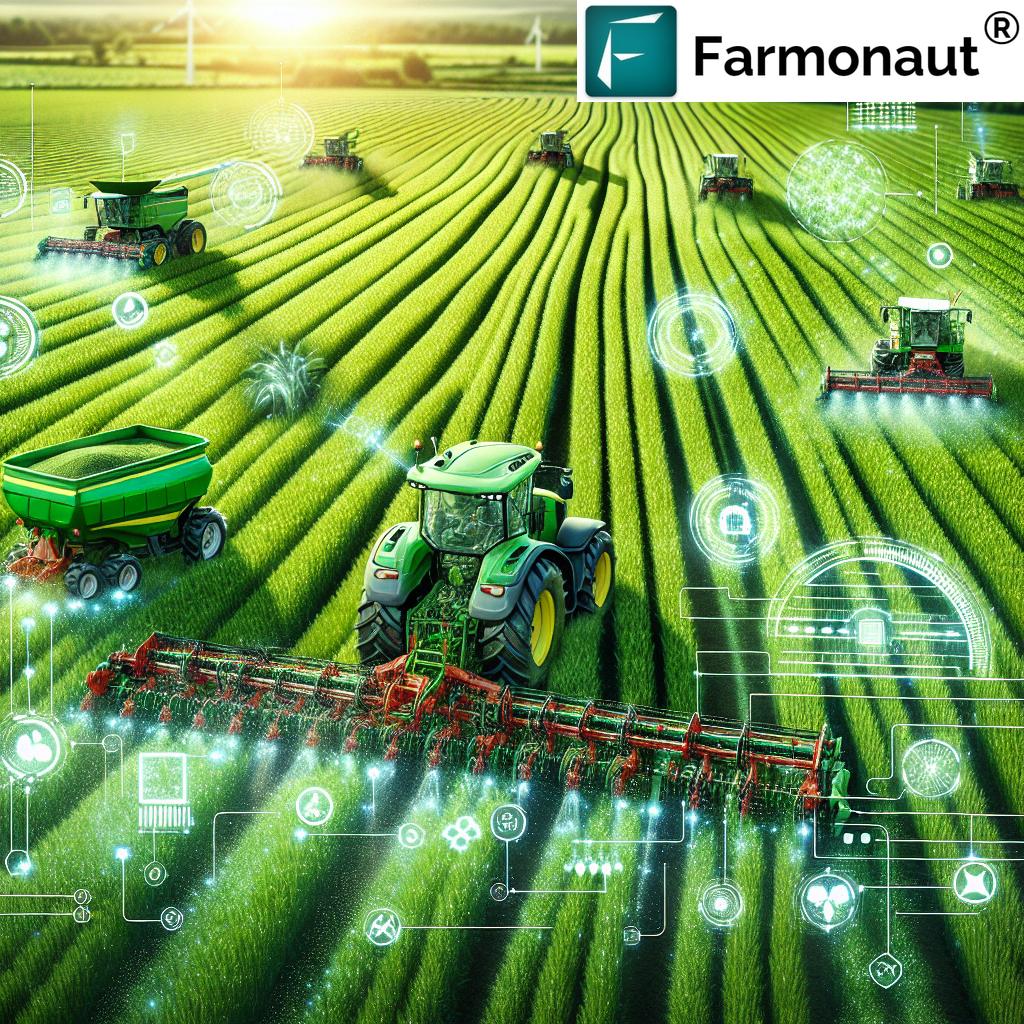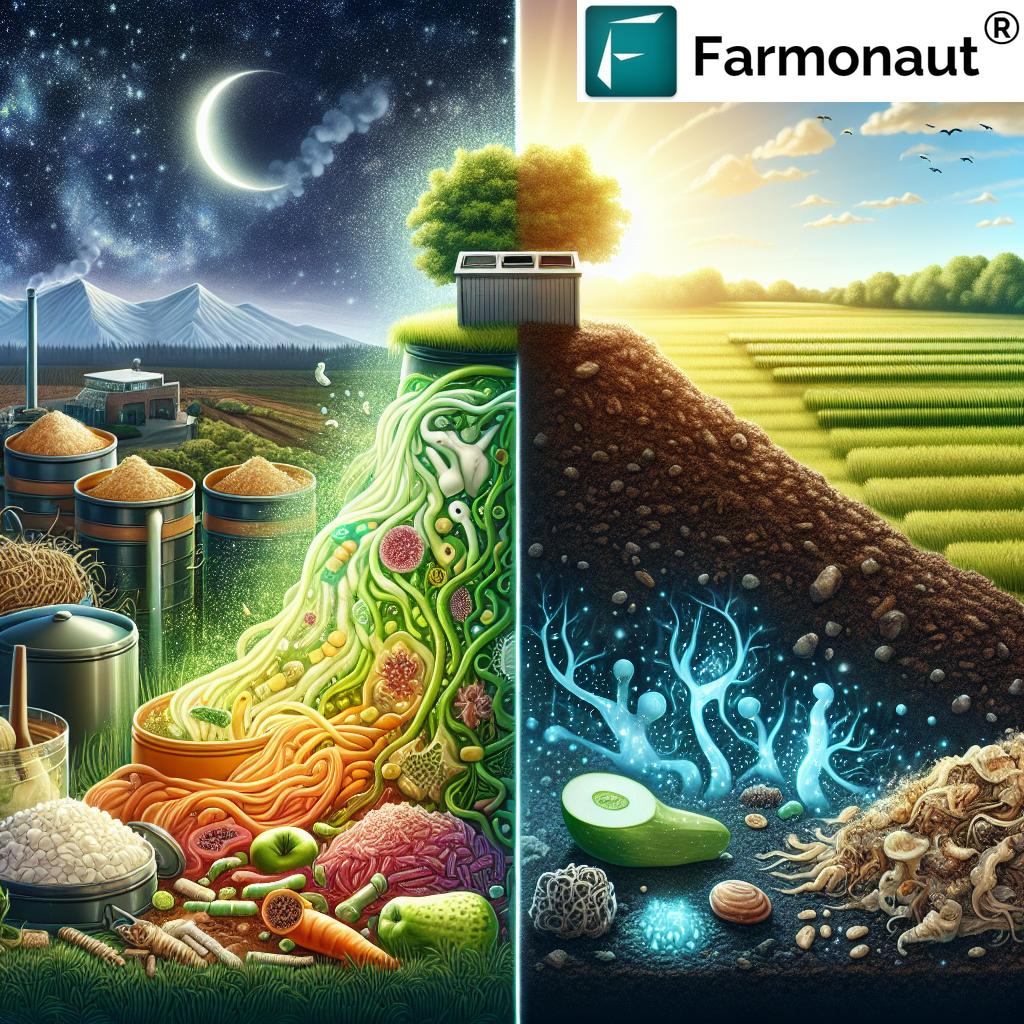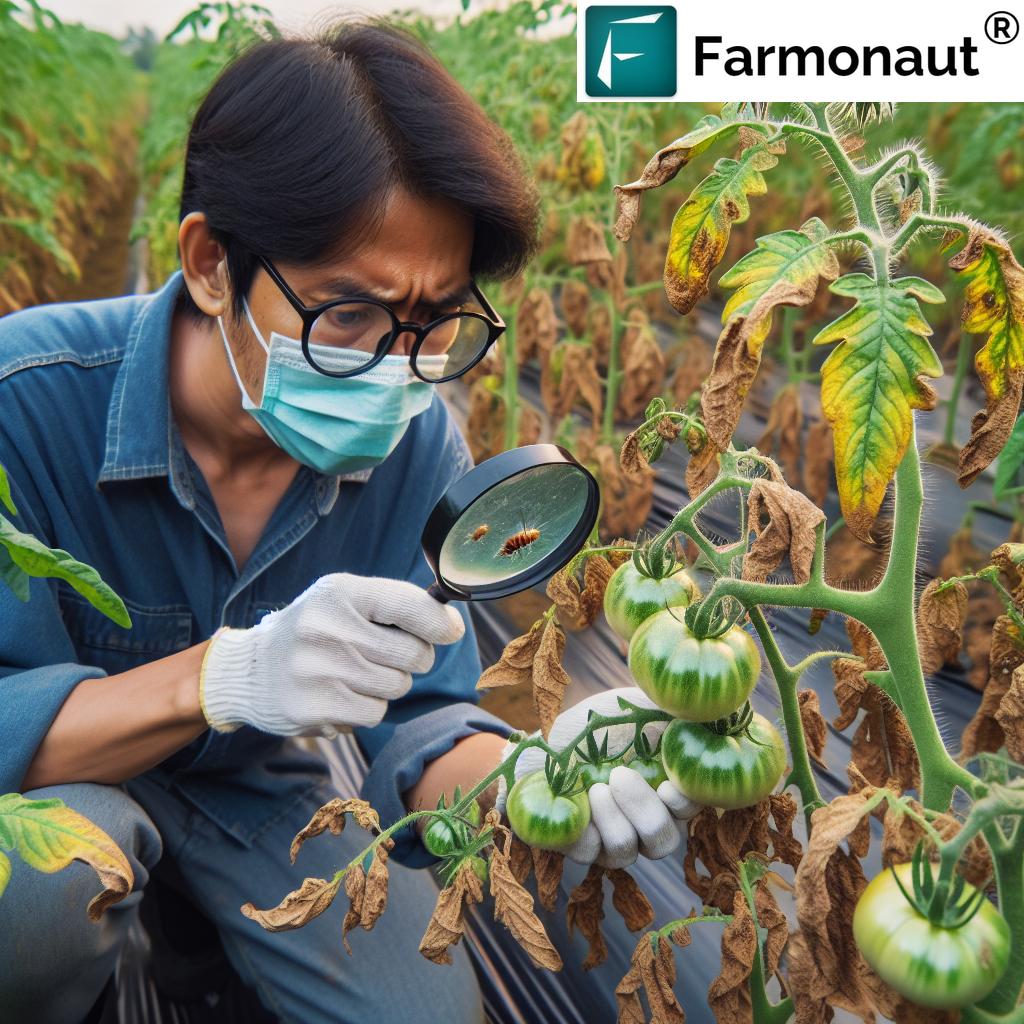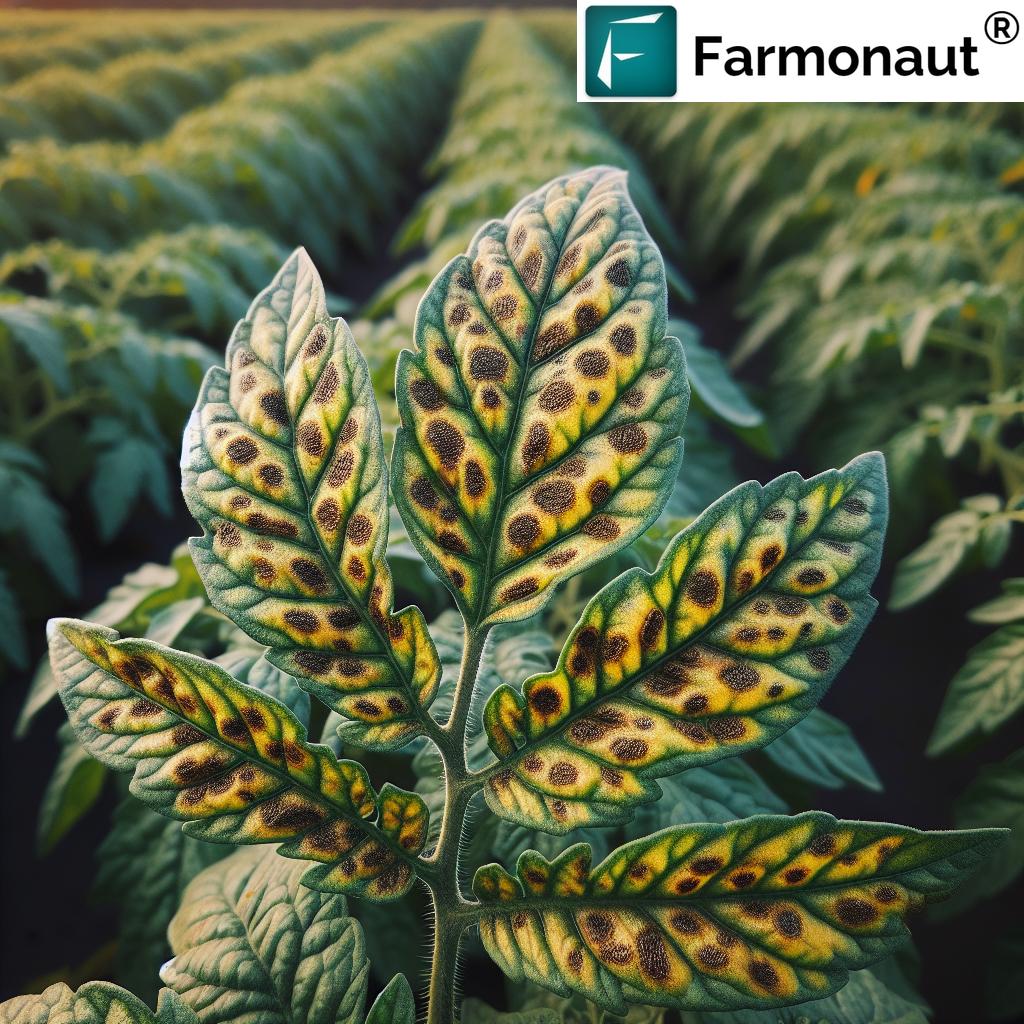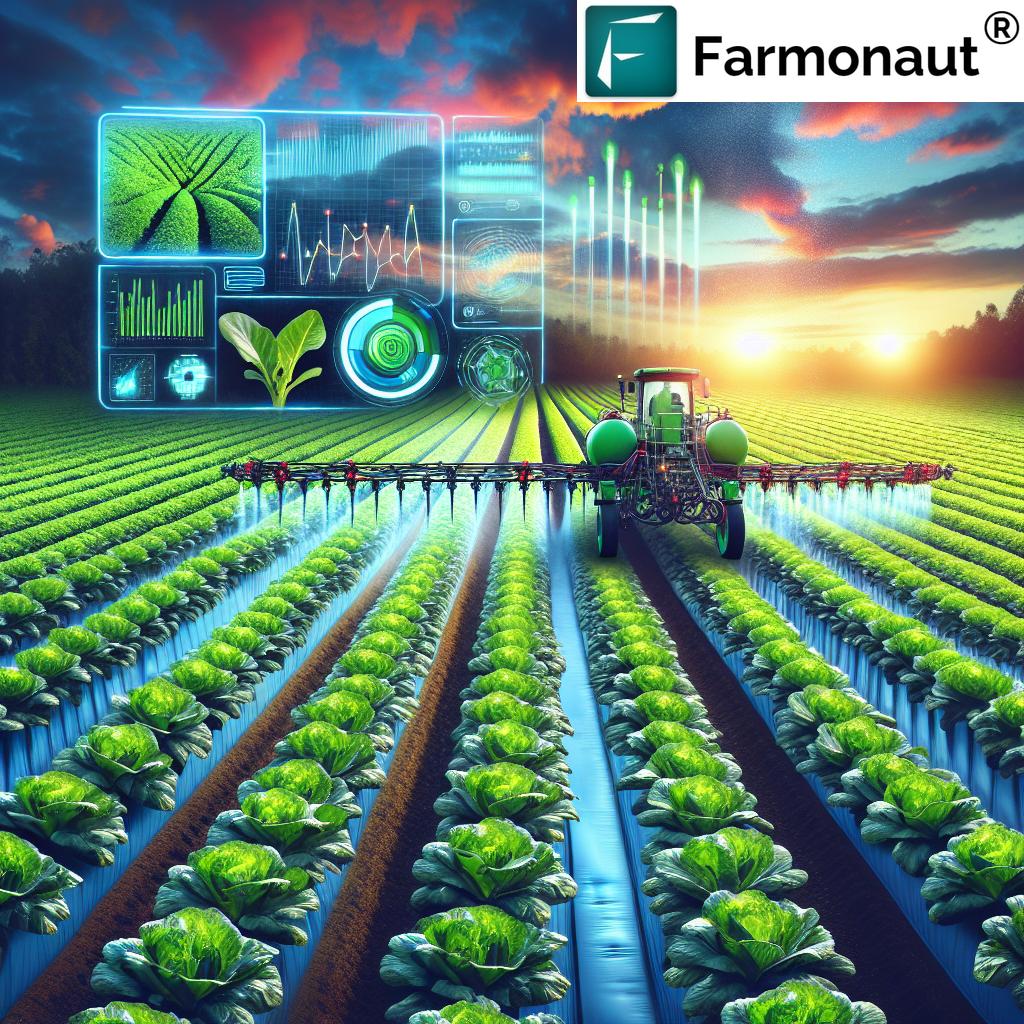Need of Precision Farming: AI Transforms Agriculture 2025
The Future of Farming: Embracing Precision Agriculture in 2025
Agriculture stands on the cusp of a technological revolution, driven by the increasing need for sustainable farming practices, resource optimization, and enhanced productivity. As global populations swell and climate change threatens food security, traditional farming methods no longer suffice. Instead, precision farming and precision agriculture have emerged as transformative approaches, reshaping the way we grow crops, manage soil, and utilize resources. In 2025, the synergy between technology and agriculture promises not only higher yields but also environmental conservation and economic viability for farmers worldwide.
“By 2025, AI-powered precision farming is projected to increase crop yields by up to 30% globally.”
The Need of Precision Farming: Driving Forces in 2025
The need of precision farming is more pressing than ever as we enter 2025. Agriculture must address complex challenges from growing global populations, changing climate patterns, finite resources, and the necessity of sustainability. Traditional methods, which rely on uniform treatment across large areas of land, often result in wastage, suboptimal yields, and excessive resource use.
Today, farmers and agricultural enterprises face several imperatives that make precision farming essential:
- Resource Efficiency: The cost and scarcity of water, fertilizers, and pesticides mandate that inputs are only applied where needed, maximizing their value and minimizing wastage.
- Climate Variability: Rapidly changing weather patterns call for adaptive solutions that can respond to microclimates at the field level.
- Labor Shortages: Automation and mechanization reduce dependency on often scarce rural labor forces, promoting operational efficiency.
- Sustainability and Environmental Goals: Ensuring soil health, biodiversity, and reduced emissions aligns with global goals for resilient agriculture.
- Economic Viability: By optimizing input application and reducing operational costs, farmers can achieve greater profitability and withstand market volatility.
The shift toward precision agriculture farming is thus not simply a trend—it’s an imperative for food security, sustainability, and economic viability in 2025 and beyond.
Precision Farming vs. Precision Agriculture: Clarifying the Concepts
The terms precision farming and precision agriculture are often used interchangeably, but understanding their nuanced differences is key to grasping their impact on modern agricultural systems.
- Precision Farming focuses on the field or sub-field level, using data-driven approaches to manage soil, crop health, and input applications (water, fertilizers, pesticides) based on exact needs. It’s about optimizing productivity and resource use within each plot of land.
- Precision Agriculture includes all aspects of farming operations—from on-field management using GPS, sensors, and drones to off-farm decision support, supply chain analytics, and market integration. It leverages broader data streams (like satellite imagery, historical weather patterns, and market forecasts) to improve decisions across the whole agricultural value chain.
In summary: Precision farming is the backbone of site-specific field management, while precision agriculture is the holistic, data-driven strategy that integrates field-level optimization with larger operational and market considerations. In 2025, both are crucial for an agriculture of precision that maximizes yield, efficiency, and sustainability.
“Over 60% of large farms will adopt data-driven technologies for sustainable agriculture by 2025.”
The Agriculture of Precision: New Paradigms for 2025
The “agriculture of precision” redefines farming as a technological and data-driven science. Instead of applying a uniform approach to large tracts of land, farmers now tailor their management practices to specific crop, soil, and environmental needs at every level, enabled by advanced technologies.
Key Components of Precision Agriculture
- Soil and Crop Health Monitoring: Sensors and satellite imagery provide precise information on soil moisture, nutrient levels, and plant health—ensuring rapid response to stress, diseases, or deficiencies.
- Variable Rate Technology (VRT): Equipment such as seeders, sprayers, and fertilizer applicators use data-driven algorithms and GPS to variably apply inputs, minimizing wastage and boosting yield.
- Remote Sensing and Drones: Drones and satellite-enabled cameras identify stress patterns, track growth rates, and even detect pest outbreaks before they become visible to the human eye.
- Farm Management Software: Integration of multiple data layers provides a holistic view—enabling precise record-keeping, compliance, and long-term optimization for farmers.
- Predictive Analytics: Modern predictive models forecast weather, yield, pest pressures, and market prices, providing actionable insights and supporting more resilient, sustainable operations.
AI Transforms Precision Farming: Technology & Innovation in 2025
As we reach 2025, AI-driven agriculture is not science fiction—it’s reality. With AI at the core of precision farming, every element—from real-time soil monitoring to predictive analytics about weather or pest outbreaks—is undergoing digital transformation.
How AI Revolutionizes Precision Farming
- Automated Crop & Soil Health Diagnosis: AI-powered image recognition identifies diseases, stress, nutrient deficiencies, and pest problems earlier and more precisely than manual scouting, empowering prompt action.
- Predictive Modeling: AI and machine learning models use historical and real-time data to forecast yield, irrigation needs, pest risks, and even market demand.
- Autonomous Machinery & Robotics: AI-guided tractors, seeders, and sprayers operate with minimal human intervention, optimizing field operations for both efficiency and cost reduction.
- Decision Support Systems: AI integration provides farmers with highly personalized, plot-level recommendations that balance economic and environmental priorities.
- Supply Chain Optimization: Predictive analytics optimize crop harvest, inventory, logistics, and market delivery, ultimately reducing post-harvest losses and enhancing traceability.
Ultimately, precision farming AI turns traditionally reactive agricultural systems into data-driven engines of resilience, productivity, and sustainability.
Comparative Benefits Table: Traditional vs. AI-Driven Precision Farming, 2025
The following table compares key performance indicators between traditional farming methods (2024 baseline) and precision/AI-driven approaches (2025 estimates). This highlights quantifiable improvements in yields, resource use, costs, and environmental impact—the core benefits driving global adoption of precision agriculture farming technologies.
| Farming Aspect | Traditional Approach (Estimated 2024) |
Precision/AI-Driven Approach (Estimated 2025) |
Improvement (%) |
|---|---|---|---|
| Crop Yield per Hectare | 4.0 tonnes | 5.2 tonnes | +30% |
| Water Usage | 12,000 m³/ha | 8,000 m³/ha | -33% |
| Fertilizer Efficiency | 50% utilized | 80% utilized | +60% |
| Pesticide Application | Uniform, 100% | Targeted, 50% | -50% |
| Operational Cost | $1,300/ha | $1,000/ha | -23% |
| Environmental Impact (Carbon Footprint per ha) | 3.5 tCO₂e | 2.2 tCO₂e | -37% |
SEO Note: The remarkable improvement across these metrics in 2025 showcases how AI and precision farming technologies are transforming agriculture for higher yield, better efficiency, reduced wastage, and true sustainability.
Key Advantages and Benefits of Precision Farming in 2025
The adoption of precision farming and AI-enabled agriculture brings profound benefits for farmers, the environment, and the global food system. These advantages explain why precision practices will dominate the agricultural landscape in 2025:
- Increased Crop Yields & Quality: Site-specific input application stimulates optimal plant growth, reducing stress and producing higher quality crops for markets with fewer losses.
- Economic Savings and Profitability: Reduced inputs (water, fertilizers, pesticides) lower direct costs, and process automation minimizes labor dependency.
- Environmental Protection: By minimizing chemical runoff and lowering the carbon footprint (see our Farmonaut Carbon Footprinting solution), precision practices reduce pollution and bolster biodiversity.
- Sustainable Soil Management: Regular monitoring preserves soil health, fertility, and structure, preventing long-term degradation.
- Resilience & Adaptability: With real-time monitoring, farmers can quickly adapt to weather changes or pest outbreaks, reducing risk and ensuring consistent production.
- Data-Driven Insights: Aggregated and integrated farm data supports both season-to-season decisions and long-term planning, making farmers more resilient in the face of uncertainty.
- Market and Supply Chain Transparency: With blockchain-based systems like Farmonaut Traceability, every agricultural input and output can be verified—building trust and traceability from farm to market.
How Farmonaut Makes Precision Agriculture Accessible in 2025
At Farmonaut, we are committed to making precision agriculture affordable and accessible for all types of farmers across the globe. By leveraging satellite imagery, AI, machine learning, and blockchain, our platform bridges the gap between traditional farming and high-tech agriculture of precision.
- Satellite-Based Crop Health Monitoring: We provide near real-time satellite data for crop monitoring (including NDVI for vegetation health, soil moisture levels, and stress detection). This allows for timely and targeted input application, reducing wastage and optimizing yields.
- Jeevn AI Advisory: Our proprietary AI-driven Jeevn system delivers real-time insights, expert advice, and weather forecasts tailored to specific field conditions—empowering smart decision-making.
- Blockchain-Based Traceability: Our traceability module ensures product origins and handling are fully transparent, supporting compliance and consumer trust for food, fiber, and feed supply chains.
- Fleet & Resource Management: The platform’s tools enable remote tracking and optimization of farm machinery, reducing operational costs and improving logistics.
- Carbon Footprinting: With integrated emissions tracking, our users can measure, manage, and reduce their environmental footprint, aligning with sustainability goals for agriculture in 2025 and beyond.
We offer access to all features via web, iOS, Android, and API, ensuring that both smallholders and large enterprises can benefit from precision farming—wherever they are.
For developers and businesses, our Farmonaut API and developer documentation provide seamless integration of satellite and weather data into any software or digital frameworks—driving analytics for innovative precision agriculture farming solutions.
To manage large-acreage farms, Farmonaut’s Large Scale Farm Management App provides plantation managers and enterprises the tools for scalable satellite monitoring, workforce management, and high-efficiency production.
Our Sat-Based Verification for Crop Loans & Insurance enables financial institutions to verify claims and expedite financing to farmers depending on real, third-party satellite data for both risk mitigation and quick approvals.
Videos: Precision Tech, Satellites & AI Reshaping Agriculture in 2025
Major Challenges and the Way Forward for Precision Farming & AI in 2025
Despite the transformative potential of precision farming AI and data-driven agriculture, farmers and agribusinesses face real-world challenges:
- High Initial Investment: Advanced sensors, automation, and digital platforms can involve significant upfront costs, especially for smallholders.
- Technology Access in Rural Areas: Lack of robust infrastructure (internet, power, hardware) and digital literacy can exclude remote communities from these innovations.
- Data Privacy and Security: The handling of large datasets brings forth concerns about data ownership, privacy, and misuse.
- Complexity and Training: Integrating and understanding new technologies requires continual training and support for farmers.
- Fragmentation of Systems: Disparate hardware and software platforms sometimes hinder seamless integration and scalability across farming operations.
The solution lies in continued:
- Innovation in Affordable Solutions: Companies like Farmonaut democratize precision agriculture by offering satellite-powered monitoring that works at scale for both smallholders and enterprises—without costly on-ground hardware.
- Expanding Digital Infrastructure: Governments, agencies, and industry must focus on connecting rural areas with robust internet and power networks.
- Farmer Education & Digital Literacy: Investment in training and education programs can empower farmers to engage with evolving technology—making them beneficiaries of the precision revolution instead of observers.
- Standardization & API Integration: Open, modular APIs (as provided by Farmonaut) accelerate system interoperability and adoption across the supply chain.
By 2025, the future of farming depends on our ability to scale these solutions and bridge the digital divide for all agricultural stakeholders.
Farmonaut Subscription Plans
Explore affordable precision farming plans. Subscribe for real-time crop health, AI insights, and sustainable management:
FAQ: Precision Farming & AI in Agriculture 2025
Q: What is the main difference between precision farming and traditional farming?
A: Precision farming uses data, AI, and remote sensing to optimize input application (like water, fertilizer) at the field or even plant level. It focuses on minimizing resources, reducing costs, and maximizing yield, in contrast to traditional farming which applies a one-size-fits-all approach across entire fields.
Q: How does AI improve crop yield and sustainability?
A: AI analyzes large agricultural datasets to provide precise and timely recommendations on irrigation, fertilization, pest control, and planting schedules. This not only increases yields by up to 30% (by 2025 estimates) but also reduces environmental impact and ensures sustainable use of resources.
Q: Is precision agriculture accessible for smallholder farmers?
A: Yes. Platforms like Farmonaut democratize access by providing precision solutions via web, mobile apps, and satellite-powered analysis, without expensive on-ground hardware. Affordable subscription models and intuitive interfaces make adoption easier for farms of all sizes.
Q: What role does remote sensing play in modern agriculture?
A: Remote sensing through satellites and drones helps monitor soil moisture, crop health, growth stages, pest & disease outbreaks, and even the effectiveness of farming practices over large and difficult-to-access areas—boosting efficiency and early intervention.
Q: How can farmers ensure supply chain transparency?
A: Solutions like Farmonaut Traceability use blockchain to track the farm-to-market journey, ensuring data integrity for food, textile, or other agricultural supply chains.
Conclusion: The Era of Agriculture of Precision
The agriculture of precision marks a profound transformation from traditional methods to AI-powered, data-driven farming. Precision farming AI doesn’t merely offer higher yields—it unlocks sustainability, resource optimization, cost reduction, and environmental stewardship.
Thanks to continuous innovation—from satellites and sensors to blockchain and predictive analytics—both smallholder and large-scale farmers are empowered to make more informed decisions. Reliable access to real-time data and actionable insights supports not only resilient agricultural production but also market traceability and global food security.
As we embrace 2025 and look toward the future, investing in precision agriculture infrastructure, digital education, and affordable solutions remains critical for the next wave of agricultural abundance—creating a world where technology, nature, and people thrive in harmony.
Embrace the revolution—discover how Farmonaut’s precision tools can help enter a new era of sustainable, data-driven farming in 2025 and beyond.





